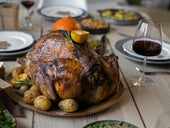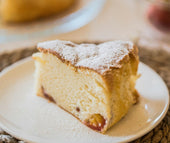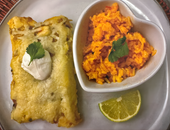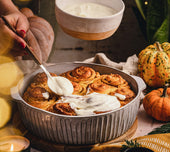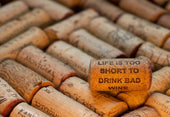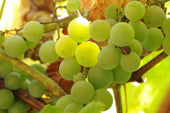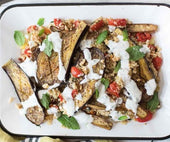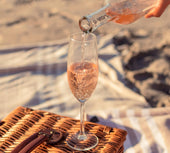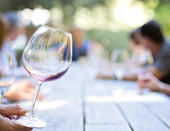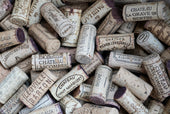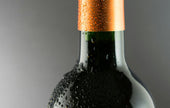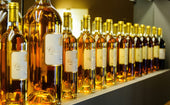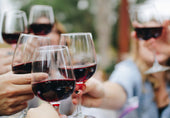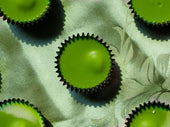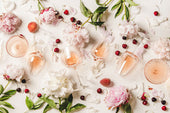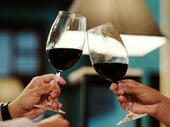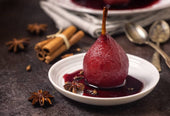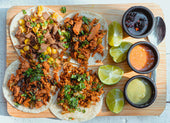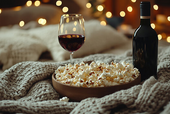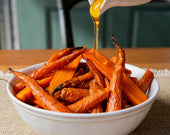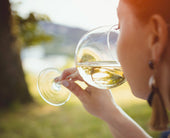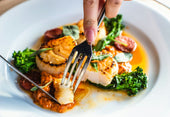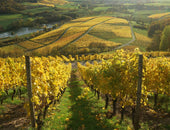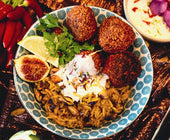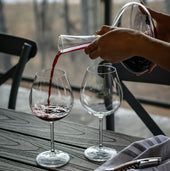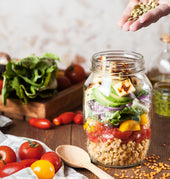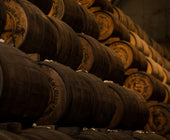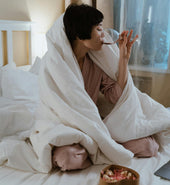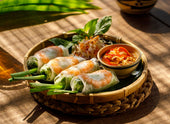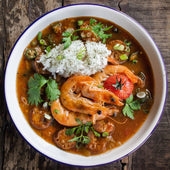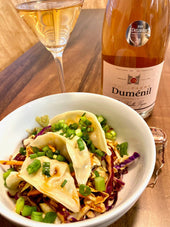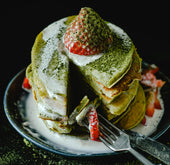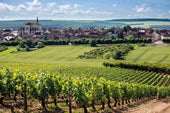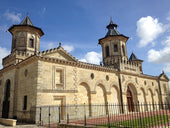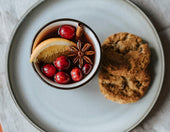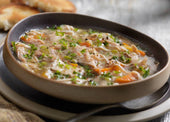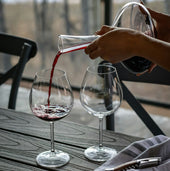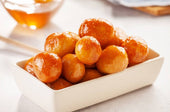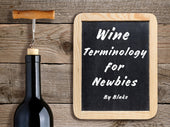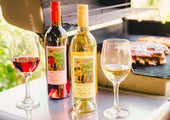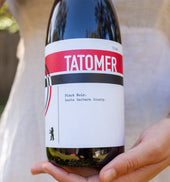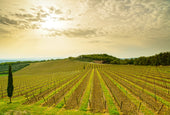
Bordeaux Reimagined: The New Bordeaux are anything but the stuffy cliché

It’s time to set aside the image of French Bordeaux aficionados as cartoonish wine snobs, whose own age reflects the age of the wines in their cellars, and instead to embrace the new Bordeaux! If you enjoy world class wines of the highest quality, lovingly made by innovative winemakers, and averaging about $20-30 a bottle, you, too, can be a Bordeaux appreciator!
Historically, Bordeaux wines have consisted of six red grape varieties (Merlot, Cabernet Franc, Cabernet Sauvignon, Petit Verdot, Carménère and Malbec) and three white varieties (Semillon, Sauvignon Blanc and Muscadelle). Red Bordeaux contain mostly Merlot, Cabernet Sauvignon and Cabernet Franc, while the whites primarily contain Semillon and Sauvignon Blanc.
In 2019, six new grape varietals were approved for Bordeaux based on their ability to withstand the effects of climate change and the first plantings began this year. These warmer-climate grapes were chosen for their versatility and their ability to maintain the Bordeaux identity. New varietals include Marselan, a hybrid of Cabernet Sauvignon and Grenache from the French Languedoc region. Touriga Nacional, from Portugal, was approved for its high tannins and black fruit flavors. An almost forgotten grape from the Pyrenees, Castets, was chosen for its mildew resistance and deep color. From the south of France, a hybrid of Tannat and Cabernet Sauvignon called Arinarnoa was selected. In addition to its flavor profile, the late-budding Arinarnoa affords protection from late Spring frosts. Rounding out the new group were two white grapes: Alvarinho, grown in both Spain and Portugal and selected for its highly acidic flavor and robust nose, and Liliorila, a hybrid from southern France. Liliorila was developed at the same time as Arinarnoa and was also included for its aromatic properties.
Combining the tradition of hundreds of years with modern techniques, Bordeaux winemakers, together with the Bordeaux Wine Council (CIVB) are challenging the maxim that Bordeaux wines are old and stuffy. Fans of US Bordeaux-style blends will appreciate these newer French Bordeaux wines for their age-ability, lower alcohol, and affordability.
These Bordeauxs do not fit the cliché of expensive, overly oaked, heavy, wines enjoyed by suits on special occasions only. In fact, a group of Chateau owners have come together to, as they state, “blow the dust off the wine world, with a more open and complete vision of today's wine world than your parents could have had in the past.” Aptly calling themselves Bordeaux Oxygen (BO2), they aim to preserve the history of this storied region while simultaneously becoming an agent of change and bringing Bordeaux into the new millennium to meet the desires of younger consumers and collectors.
Bordeaux Chateaux and winemakers are responding to today’s palate by using modern winemaking techniques and leveraging lesser-known grapes to create their own unique blends. By harvesting the grapes at the peak of ripeness, fruit-forward flavors are captured and preserved. More subtle maceration (crushing) methods extract fewer tannins resulting in younger wines that are ready to enjoy. Other approaches, such as using larger oak barrels to reduce wine contact with oak or opting for non-oak fermentation vessels (such as concrete vessels), also reduce tannins while still preserving the ability to “lay down” a red Bordeaux.
Given the historical dominance of red Bordeaux, it’s easy to forget that the Bordeaux region is home to a host of white wines, from the light and fruity to the rich and creamy. Bordeaux is also the origin of Sauternes, from the same-named region, that glean their sweet and fruity nature from the appearance of “noble rot” or Botrytis cinerea, before harvest. For those who entertain, replacing the Sauvignon Blanc on your table with a White Bordeaux can introduce a nice change of pace and earn a double-take from your guests.
This is not to imply that inexpensive Bordeauxs are only fit for immediate consumption. Collecting Bordeauxs to lay down has rarely been more affordable. According to the CIVB, only 3% of Bordeaux production is “classified”, or produced under one of the five Bordeaux classified growths that lend prestige to this growing region. This leaves a lot of room for small, family properties to create affordable options for your Vin de Garde (wine to keep).
Plume Ridge Bottle Shop is the perfect spot to develop your Bordeaux palate and begin your own collection from this region. Wine buyer Monica Yu visits the region annually, tracking down wines that meet the bottle shop’s rigid requirements, using the authority of her WSET Diploma Certification and her youthful perspective to make selections.
Plume Ridge’s drink-me-now Bordeauxs include reds, whites and rosés. For a rosé with intense raspberry fruit and a clean finish, try the 2020 Domaine de Chevalier Rosé de Chevalier Bordeaux, described as “an exquisite pleasure.” At $15.99 a bottle, you can enjoy this little gem on weeknights for the remainder of the Summer and into the balmy days of Fall. Not to mention that Domaine de Chevalier is a Grand Cru Classé estate ranked in the Classification of Graves wines and the production is overseen by manager Olivier Bernard.
G de Chateau Guiraud, Bordeaux, 2019, comes from a Premier Grand Cru Classé property. Organically farmed and utilizing other natural practices, the Chateau is located in the famous Sauternes growing region. This dry white blend of Sauvignon Blanc and Semillon is not only indecently affordable, but received a 93 from renown wine critic and former Wine Spectator Editor James Suckling.
Also from Sauternes, Plume Ridge offers an affordable version of the region’s signature wine, from Chateau Suduiraut. Aficionados of Sauternes will appreciate this wine’s tropical bouquet and distinct botrytis-ey flavor.
The appropriately named Cuvee Carpe Diem Bordeaux Superieur Red (2015) is imported exclusively by Plume Ridge. Napa Valley wine lovers flock to this wine for its robust and powerful profile but at a fraction of the price. Seize this 90 point (The Tasting Panel) bottle to serve with your next grilled steak.
There are numerous lay-me-down options through Plume Ridge Bottle Shop with a plethora of new imports arriving over the summer.
At $25.99, Chateau Les Cruzelles is a hidden gem that’s priced just right. It is owned by Denis Durantou, of Chateau L’Eglise Clinet, whose wines range from $200-300 a bottle. Le Cruzelles shares the same terrior of this famed estate located next to to the Pomerol region — one of the distinguished right bank appellations known for its rich, clay and gravelly soil.
Chateau Pedesclaux “Fleur de Pedesclaux” is the second label of Chateau Pedesclaux. (Second label Bordeaux wines are usually made from younger vines, but, in essentials, the same as first wines. They are much more affordable and can be consumed earlier.) Chateau Pedesclaux is situated between Chateau Lafite and Chateau Mouton Rothschild — some of the world’s most prominent wines in the Pauillac appellation of Bordeaux. Here is an opportunity to try it at a fraction of the Grand Vins price.
Monica Yu liked the 2018 Chateau Lacaussade Saint-Martin “Trois Moulins” Blaye Cotes de Bordeaux so much that she centered a virtual tasting around it. Owned and managed by Jacques and Sabrina Chardat, the Chateau employs organic and sustainable practices all while creating this 92 point (Decanter) Red Bordeaux. You can enjoy this wine now or add it to your Vin de Garde collection.
To explore all the Bordeaux Plume Ridge has to offer, click this link, or choose Bordeaux from the main menu. You can filter by your price point or by bestsellers and start filling up your cart — and your cellar — with new French Bordeaux
 Patty Lyn Tweten is a writer, graphic designer and vineyard owner. She is also a devoted fan of rosés having helped her husband make their own with the sagniée method. Instagram Linkedin
Patty Lyn Tweten is a writer, graphic designer and vineyard owner. She is also a devoted fan of rosés having helped her husband make their own with the sagniée method. Instagram Linkedin

